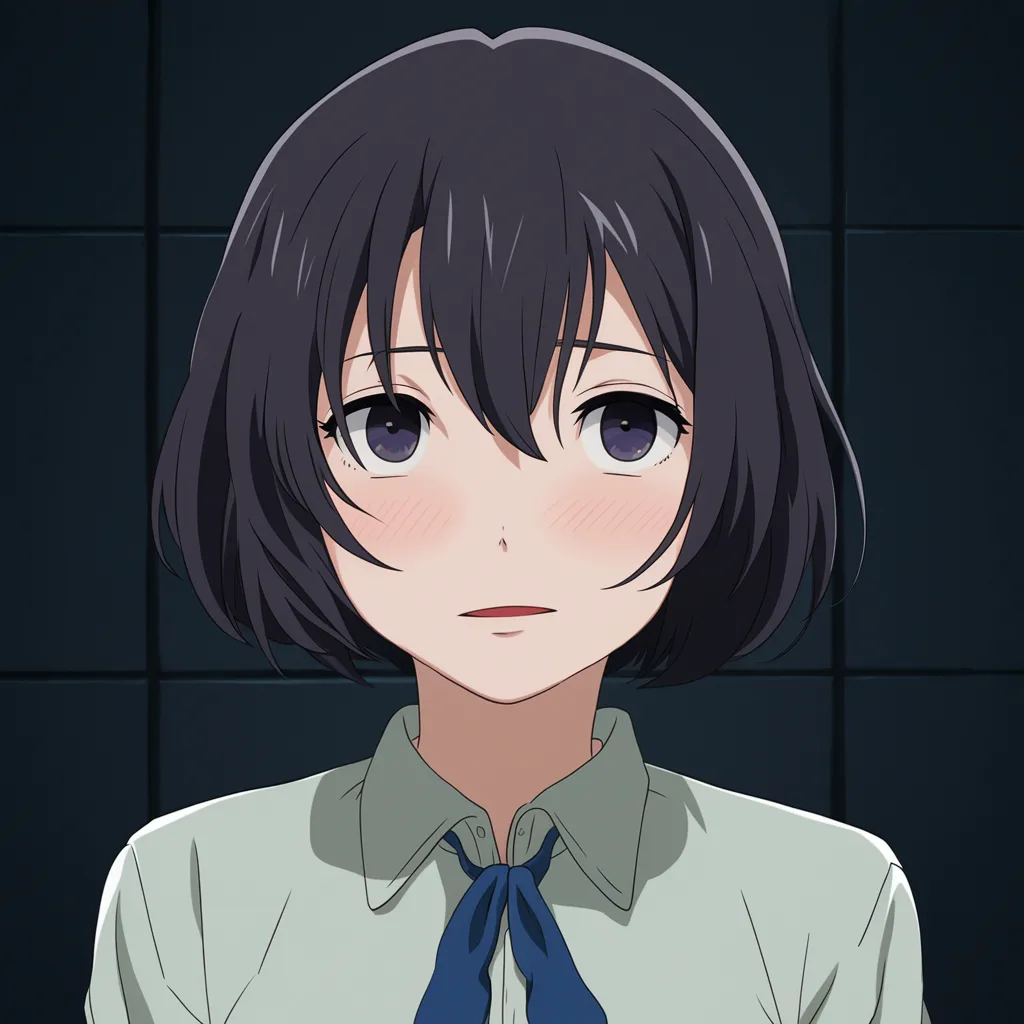At university, I almost had my dissertation proposal on Mari Okada rejected. My supervisor argued that a screenwriter with only one directorial credit wasn’t worthy of study under the esteemed notion of “auteur.” However, in today’s landscape where even average franchises like Demon Slayer dominate the box office, films like Maboroshi stand out. They provoke thought, stir debate, and embody the creative essence of their maker, Mari Okada. But does Maboroshi qualify as a great film? Let’s find out.
The Story of Maboroshi: A Town Trapped in Time
Maboroshi marks Mari Okada’s second time directing, and it presents the story of Mifuse, a town frozen in an eternal winter. After an explosion at a nearby steel factory, time stopped, leaving the residents unable to age. The cracked sky above mirrors their broken existence, and the citizens believe this curse results from divine punishment. The factory had mined a nearby mountain, upsetting the local god. They fear that changing in any way might prevent them from reintegrating into the outside world when the curse is lifted.

However, one group cannot escape change—teenagers.
Masamune Kikuiri was 14 when time stopped. Now, he spends his days avoiding responsibility, refusing to fill out career-monitoring forms, and seeking thrill-seeking adventures with friends. His life takes a turn when he becomes entangled with Mutsumi Sagami, a classmate caring for a mysterious girl confined to the steel factory. This girl, while physically a teenager, mentally swings between a childlike state and feral behavior. As Masamune and Mutsumi take care of her, they uncover a fate that connects them and might hold the key to freeing their town.
Watching Maboroshi: A Mari Okada Experience
Before diving into Maboroshi, I debated whether to watch it alone or with family. Everyone in my household adored Maquia, but I knew that Okada’s style can sometimes be… Okada. Just five minutes in, I was relieved to have chosen solitude. The film opens with teen boys gawking at the backs of their female classmates’ knees, an uncomfortable but unmistakable Mari Okada’s Maboroshi hallmark. As the author of O Maidens in Your Savage Season, Okada knows how to capture the awkwardness of teenage sexuality.
While the film sets itself against a sci-fi backdrop, its core theme remains one that Okada has explored throughout her career—the chaotic nature of teenage love. The townspeople’s warnings against change mirror the emotional upheaval of adolescence, where rejection can cause someone to literally start cracking. In one of the film’s most touching moments, a character describes this as a “sweet pain.” This sentiment encapsulates Maboroshi’s emotional heart: love hurts, but it’s a worthwhile experience.
True to Okada’s unconventional style, the film’s ending has sparked controversy among viewers. Okada had several opportunities to avoid certain implications but instead chose to lean into them. While I won’t spoil the plot, this bold narrative choice will undoubtedly fuel discussions long after the credits roll.

Okada’s Screenwriting Shines in Maboroshi
Despite its controversial moments, Maboroshi showcases Okada’s screenwriting prowess. The script is tightly woven, with developments that feel neither too predictable nor forced. The characters, apart from a slightly exaggerated antagonist, come across as fully fleshed out and deeply human. Their emotions are real but often perplexing; their actions clear yet contradictory. As they struggle to find meaning in their stagnant lives, they also discover fleeting moments of connection, culminating in one of anime’s most satisfying kisses.
Okada’s strength lies in her ability to portray teenagers as the complicated, contradictory beings they are. Her decades of screenwriting experience, combined with her deep understanding of adolescence, make Maboroshi a standout.
Stunning Visuals by Studio MAPPA
Animated by Studio MAPPA (Attack on Titan: The Final Season, Jujutsu Kaisen), Maboroshi paints a haunting yet visually arresting world. The town of Mifuse, once an industrial hub, is now a post-apocalyptic landscape. A repurposed furnace serves as a Shinto shrine, and the sky shatters like glass. The film’s striking visual identity comes from a talented team, including Maquia art director Kazuki Higashiji. It’s a tragedy, then, that Netflix, which holds the international rights, doesn’t intend to release Maboroshi in theaters, depriving viewers of the chance to see these stunning visuals on the big screen.
format(webp))
Conclusion: A Fascinating Cinematic Experience
Maboroshi is a fascinating film. If Maquia was Mari Okada’s attempt to create a more commercial work, Maboroshi is her unrestrained passion project. The film is as beautiful as it is bold, unfiltered in both its triumphs and its shortcomings. While Maquia remains her masterpiece, Maboroshi stands as a cinematic curiosity worthy of attention. It won’t be for everyone, but for those willing to dive into Okada’s unique storytelling, it’s a journey worth taking.


